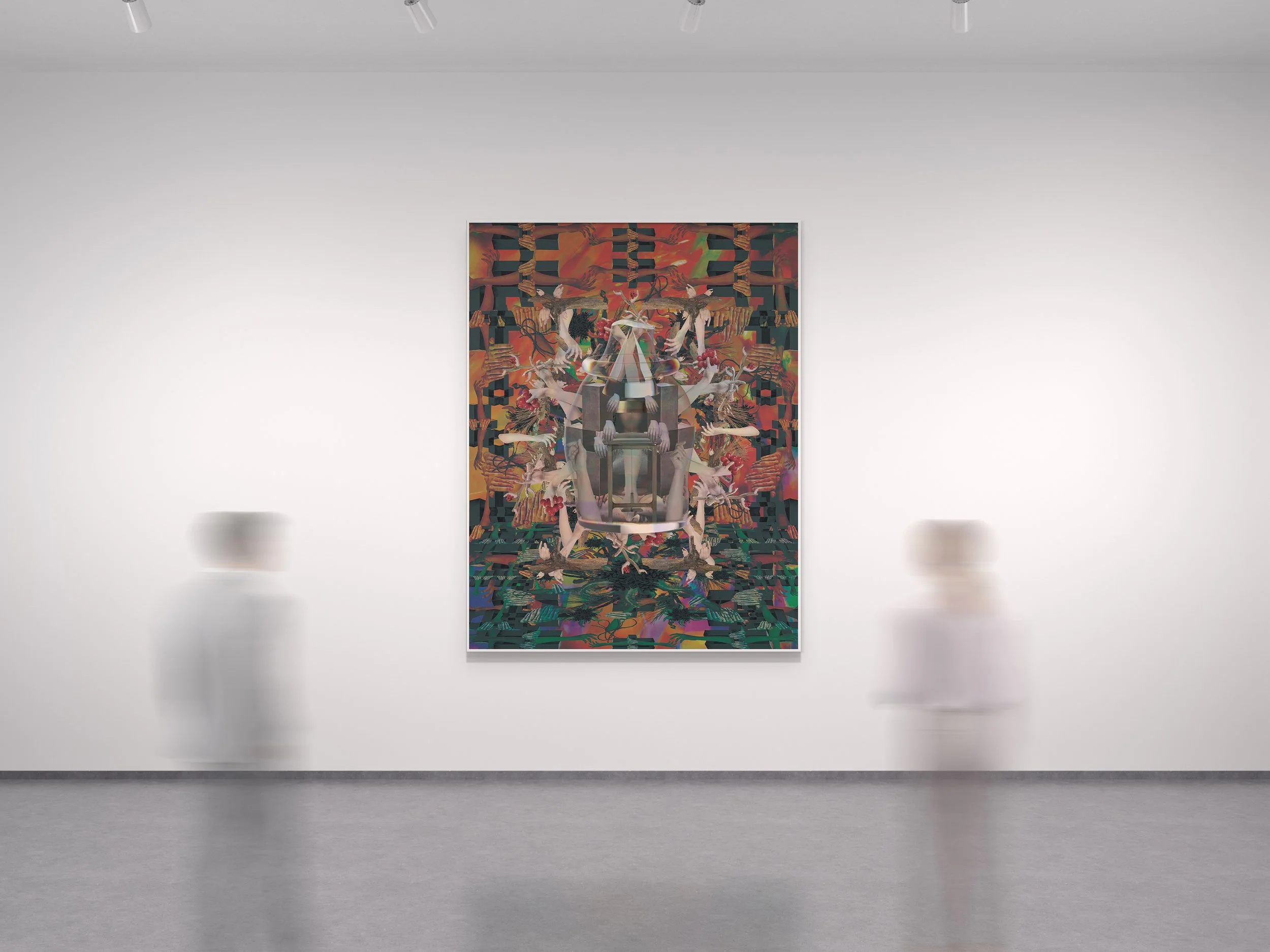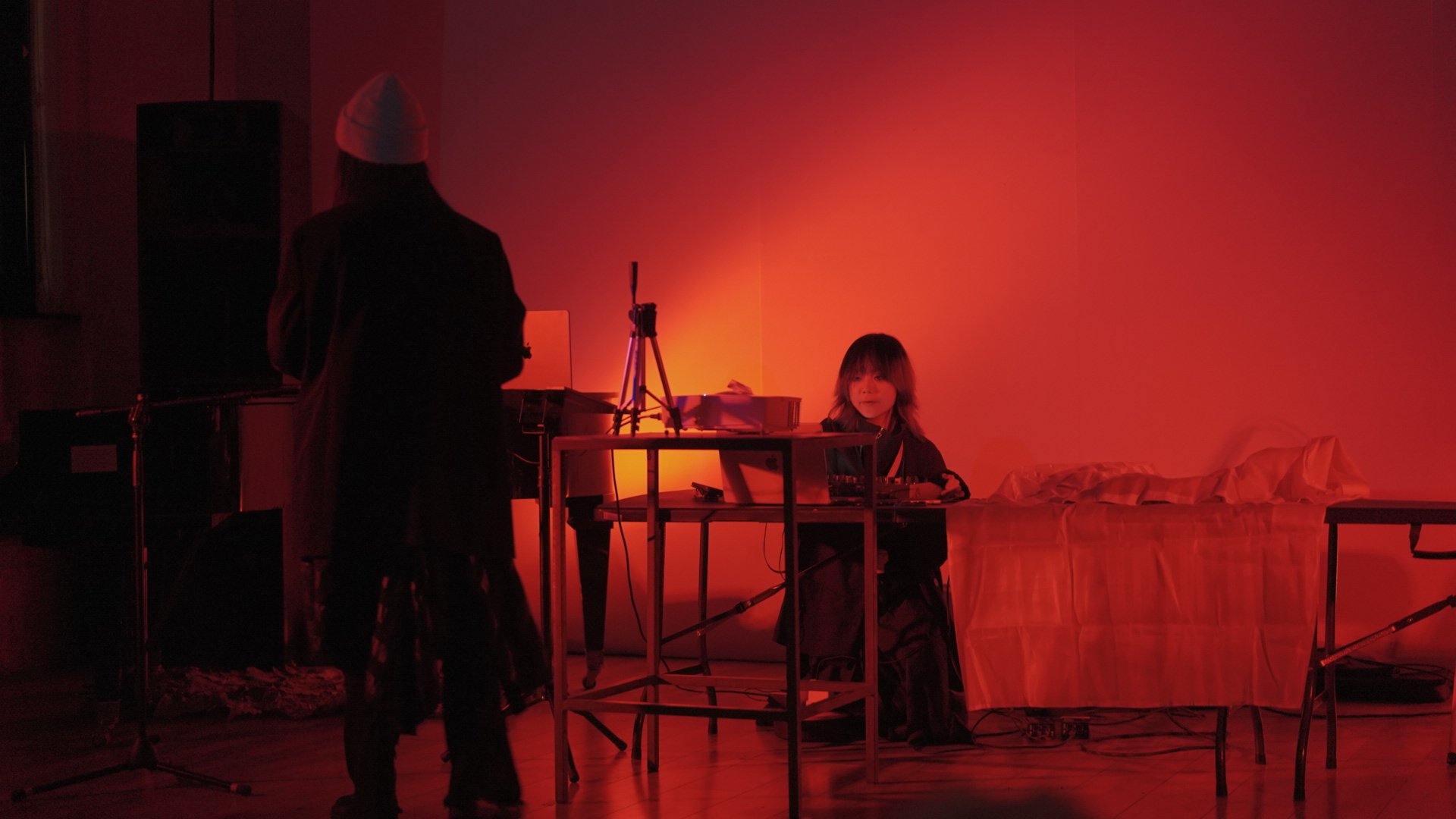Interview
Lingyu Zhang
Iris Lingyu Zhang is a multi-media artist and researcher based between London and Beijing, whose work explores the intricate relationship between body and space. Drawing on a deep well of auto-ethnographical research in psychology and philosophy, Iris delves into the emotional and spiritual layers of human experience. Her art invites viewers to reflect on the subtle, often unseen connections between our inner worlds and the spaces we inhabit. Through a unique blend of mediums, she creates immersive environments that evoke introspection, challenging perceptions of identity and existence. Iris' practice not only bridges cultures but also transcends the boundaries of the physical and the metaphysical.
What is your background and how did you start your journey in the art world?
“As you can tell from my name, I’m originally from China, and I grew up in Beijing. People here, including my family, friends, and classmates, often seem to live under this invisible weight of societal pressure. I started noticing this around middle school. My thinking felt pretty much the opposite of that. It’s like there’s this invisible path shrouded in mist, while everyone else is trapped in a transparent plastic box. Many people are in there, encouraging you to stay inside, but I wanted out. I’ve always wanted to break free from those constraints and rules - whether it’s regarding women, teenagers, or just myself as an individual. When friends asked about my dreams, I used to say, ‘I want freedom. Not just the superficial freedom of traveling the world or living in an RV doing remote work. I want true freedom, mental freedom.’ I began exploring ways to break through that invisible bondage. From graphic design in college to mixed-media art in graduate school, I’ve coexisted with my art. I see my work as a hammer to break free, sometimes aimed at the world, but more often at myself.”
What inspires you?
“After explaining my work, colleagues often say, ‘You’re a really keen observer.’ I’ve come to realize that’s true. In the early stages of my artistic journey, I created based on simple things from my life that intrigued me - like the differences between cats and humans, or the overlap between my childhood memories and reality. Then, when I started working on my ‘Polyhedron’ project, I embarked on a journey to dig into my emotions. It became a form of art therapy, where feelings like anger, anxiety, and fear were traced back to mental wounds or societal contradictions. This led me to conduct in-depth studies in psychoanalysis until I established my self-narrative. Now, I find inspiration by observing my romantic life, emotions, and surroundings from a third-person perspective.”
What themes do you pursue? Is there an underlying message in your work?
“I use auto-ethnography in my research and creative process, so my themes are quite self-centered, focusing on my body, mental world, and observations about the world around me. You could say it’s micro-focused, but I often feel that my personal issues reflect broader experiences, particularly among East Asian women, which can extend to a larger feminist perspective. I love exploring connections - the connection between body and space, the mental world and the city, the individual and the community, and so on. This theme is central to my work. It helps me better understand my place in the world and allows my pieces to expose the oppression and exploitation women and immigrants face due to societal conditioning and consumerism. I think all my work ultimately points to one conclusion: I’ve become something non-human.”
How would you describe your work?
“I’d say my work is thoughtful, like a monument that carves the present into time. My pieces are always progressing and evolving, just as I grow through the thoughts and experiences within them. As a kid, my diaries served as those monuments, and now my work has replaced them, capturing my emotional experiences, mental breakdowns, research processes, and debates.”
Which artists influence you most?
“I’d have to say Tracey Emin. I know it sounds cliché, but her revolutionary exploration in feminist art is something we can’t overlook. Before I came to the Royal College of Art, I didn’t know much about her, but my classmates and teachers later recommended researching her. I realized that many of my ideas and thoughts were pioneered by her. I think emotional and life-exploring female artists often take similar paths in their reflections on the world. This shows that women's pain is universal, relatable, and woven together.”
“I’d say my work is thoughtful, like a monument that carves the present into time.”
What is your creative process like?
“I’d describe it as continuous observation, always observing. I often write after a date, jotting down my emotions. Sometimes it’s poetry, sometimes a deep dive into the past, or just pondering the sources of my feelings. Based on that, I create quick digital collages to visualize those emotions and elements. Then, after I get tired of researching a topic, I compile all my drafts to try to study the sources of that pain. Sometimes I find solutions, but most of the time, there aren’t any. All I can do is showcase women’s situations through my work. Depending on the themes, the final medium may vary, but clarity in communication is always the core consideration.”
What is an artist’s role in society and how do you see that evolving?
“I’d say an artist’s role is to provide the public with subtle perspectives, bringing forth different viewpoints and thoughts. This collective thinking can drive society toward positive progress. Especially today, with the rise of artificial intelligence, I believe that the thoughts and messages conveyed in art are even more crucial for the artist's role. Nowadays, especially in contemporary art, traditional techniques are no longer the focus. Interdisciplinary thinking, communication, and breakthroughs have opened up more opportunities for today’s artists.”
Have you had any noteworthy exhibitions you'd like to share?
“My recent exhibitions include: Sound Field Folding, Hundred Years Gallery, London, 13 Pearson St, London E2 8JD (2024); MRes RCA 2024 Research Journeys, The Hanger Gallery, 15-25 Howie Street, Battersea, London SW11 4NL (2024); Fragment for the Future: Movement, The Hanger Gallery, 15-25 Howie Street, Battersea, London SW11 4NL (2024) and Whispers of the Unseen: Sonic Alchemy, Iklectik, 20 Carlisle Lane, London SE1 7LG (2023).”
















